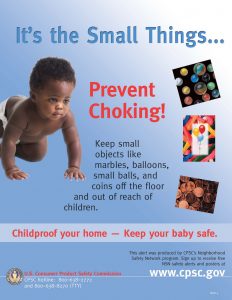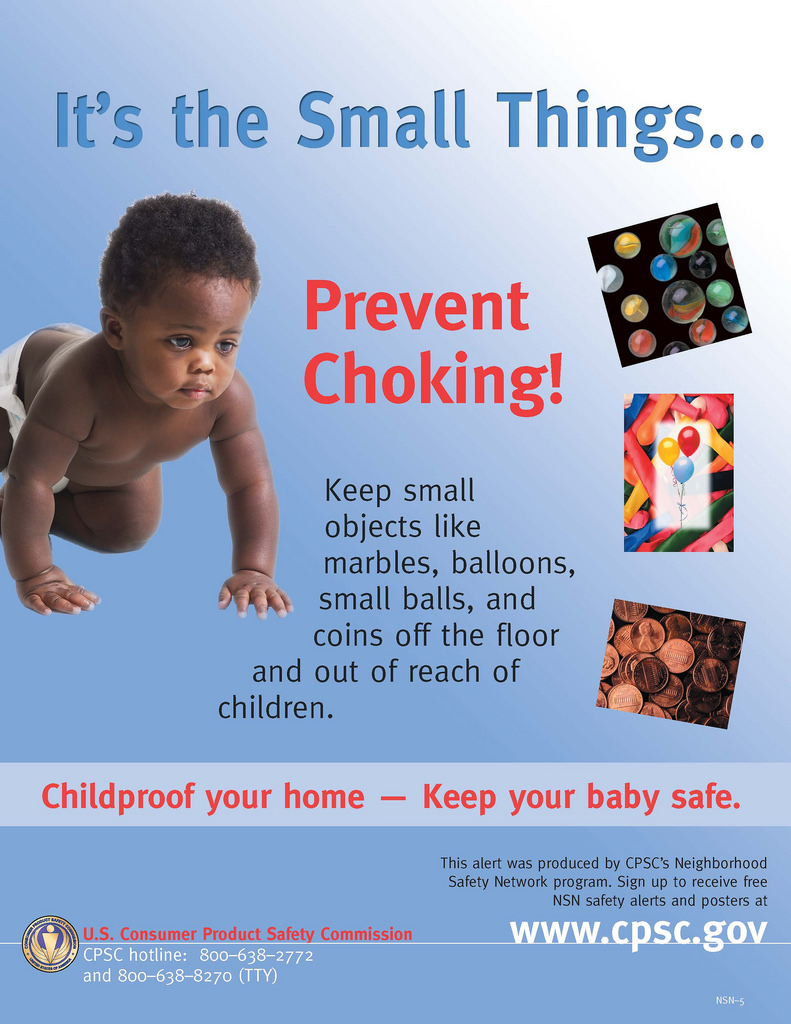 From the America Academy of Pediatrics comes a great warning for people feeding small children.
From the America Academy of Pediatrics comes a great warning for people feeding small children.
- Hot dogs
- Nuts and seeds
- Chunks of meat or cheese
- Whole grapes
- Hard or sticky candy
- Popcorn – kids die from this
- Chunks of peanut butter (it sticks to the roof of their mouth and also blocks the airway)
- Chunks of raw vegetables
- Chewing gum (Why give a kid gum? You’re just asking for trouble!)
Choking can be prevented.
Food accounts for over 50% of choking episodes. Be alert for small objects that can cause choking, such as coins, buttons, and small toys. Check under furniture and between cushions for small items that children could find and put in their mouths. Toys are designed to be used by children within a certain age range. Age guidelines take into account the safety of a toy based on any possible choking hazard. Don’t let young children play with toys designed for older children. Latex balloons are also a choking hazard. If a child bites a balloon and takes a breath, he could suck it into his airway.
Choking Hazard Items
Keep items that are choking hazards away from babies and young children. These include:
- Coins
- Buttons
- Toys with small parts
- Toys that can fit entirely in a child’s mouth
- Small balls, marbles
- Balloons
- Small hair bows, barrettes, rubber bands
- Pen or marker caps
- Small button-type batteries
- Refrigerator magnets
- Pieces of dog food

